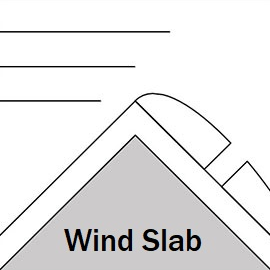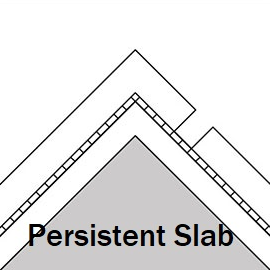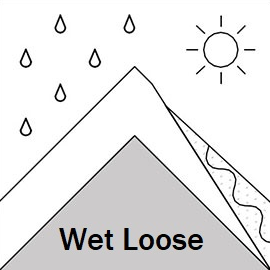Gudauri
Natural avalanches are possible, human-triggered avalanches are likely. Small avalanches in many areas, or large avalanches in specific areas, or very large avalanches in isolated areas.
Recent excessively warm period is about to end as the series of bigger snowfalls arrive but it's effects are still ongoing.
Forecast issued at: 3 April 2025 21:30
Forecast valid until: 6 April 2025 21:30
Forecaster: Petr Zherdev
High Alpine
> 2600m
3 Considerable
Dangerous avalanche conditions. Careful snowpack evaluation, cautious route-finding and conservative decision-making essential.
Alpine
2000m - 2600m
3 Considerable
Dangerous avalanche conditions. Careful snowpack evaluation, cautious route-finding and conservative decision-making essential.
Sub Alpine
< 2000m
2 Moderate
Heightened avalanche conditions on specific terrain features. Evaluate snow and terrain carefully; identify features of concern.
Avalanche Problems
Wind Slab

Strong SW and S winds built dense, reactive slabs near ridges, which if triggered could also trigger older layers.
| Sensitivity | The specific avalanche problem type is reactive to human rider triggers. Easy to trigger with ski cut. |
| Distribution | Specific areas, with common characteristics. Evidence for instabilities exists, but it is not obvious and finding it requires careful observations. |
| Time of Day | All day |
| Trend | Improving |
| Confidence | Moderate |
Persistent Slab

Weak facet layers in the lower half of the snowpack, in high alpine shady areas, could create a very large avalanche event if triggered. The extra weight of recent snow, as well as recent warm period, makes these avalanches more likely. Try to minimise your exposure to large paths, and avoid common trigger points such as areas near rocks or steep convex roll-overs. Look out for whumphing, cracking and recent avalanches - these signs tell you the snow is unstable and you should stick to safe terrain only. Avalanches could still be triggered from a distance.
| Sensitivity | The specific avalanche problem type is difficult to trigger with a human rider. |
| Distribution | Specific areas, with common characteristics. Evidence for instabilities exists, but it is not obvious and finding it requires careful observations. |
| Time of Day | All day |
| Trend | Improving |
| Confidence | Moderate |
Loose Wet

Despite the air temps will stay below 0C overnight and rise only slightly above 0C during the day, most recent and upcoming wet snow will be keeping this danger active in steeper areas. Avoid such steep areas at lower elevations as any snow left could easily move (especially on the underlying crusts that may be created during colder nights)
| Sensitivity | The specific avalanche problem type is reactive to human rider triggers. Easy to trigger with ski cut. |
| Distribution | Many locations. Evidence for instabilities is frequently found, in many locations. |
| Time of Day | All day |
| Trend | No change |
| Confidence | High |
Recent Avalanches and Snowpack
Recent Avalanches:
Before March 31st: Multiple loose wet slides, most aspects and all elevations, observed last few days, up to size 2. Multiple natural and triggered slab avalanches in high alpine zone, 24th - 27th, N, NE and NW aspects, size 2 to 4.
March 31 - April 3rd: Natural size 2 wet slab - NW slope, 2850 m., multiple other size 2 wet slab avalanches with some of them being as big as size 3 in Kobi valley. Size 3 slab avalanche down the N Sadzele slope.
Snowpack: Recent warm temperatures, greenhouse effect and rain up to high elevations has pumped a lot of heat and water into the snowpack. Total rainfall recorded at 1950m since Monday 31st of March is 40mm Lower than 2500m the snow is disappearing rapidly while higher up the snow is heavily saturated with moisture. Previously, a cohesive, reactive slab had formed above older layers on high alpine shaded areas, with propagating failures found in tests - recent avalanche activity in Kobi and Sadzele areas confirm these findings. Loose snow slides or wet slabs are still likely in most places in the afternoon.
Weather
Air temps around 0C with 3-4C mid-day and -2 during the night. Freezing level will stay at 2300 m. during the night and at 2500 m. during the day. No significant winds forecasted at all elevations. Cloudy on saturday and sunday. Light rain to light snow on friday with some more snow on friday and saturday night.
Disclaimer
Our avalanche forecasters are internationally qualified and experienced professionals, and data is provided by skilled observers. We encourage you to make your own observations and decisions, without relying solely on our forecast, since any forecast is a generalised 'best guess', and in certain cases it might be inaccurate. We can not be held liable for any actions you take in the backcountry that may result in injury, loss or death.